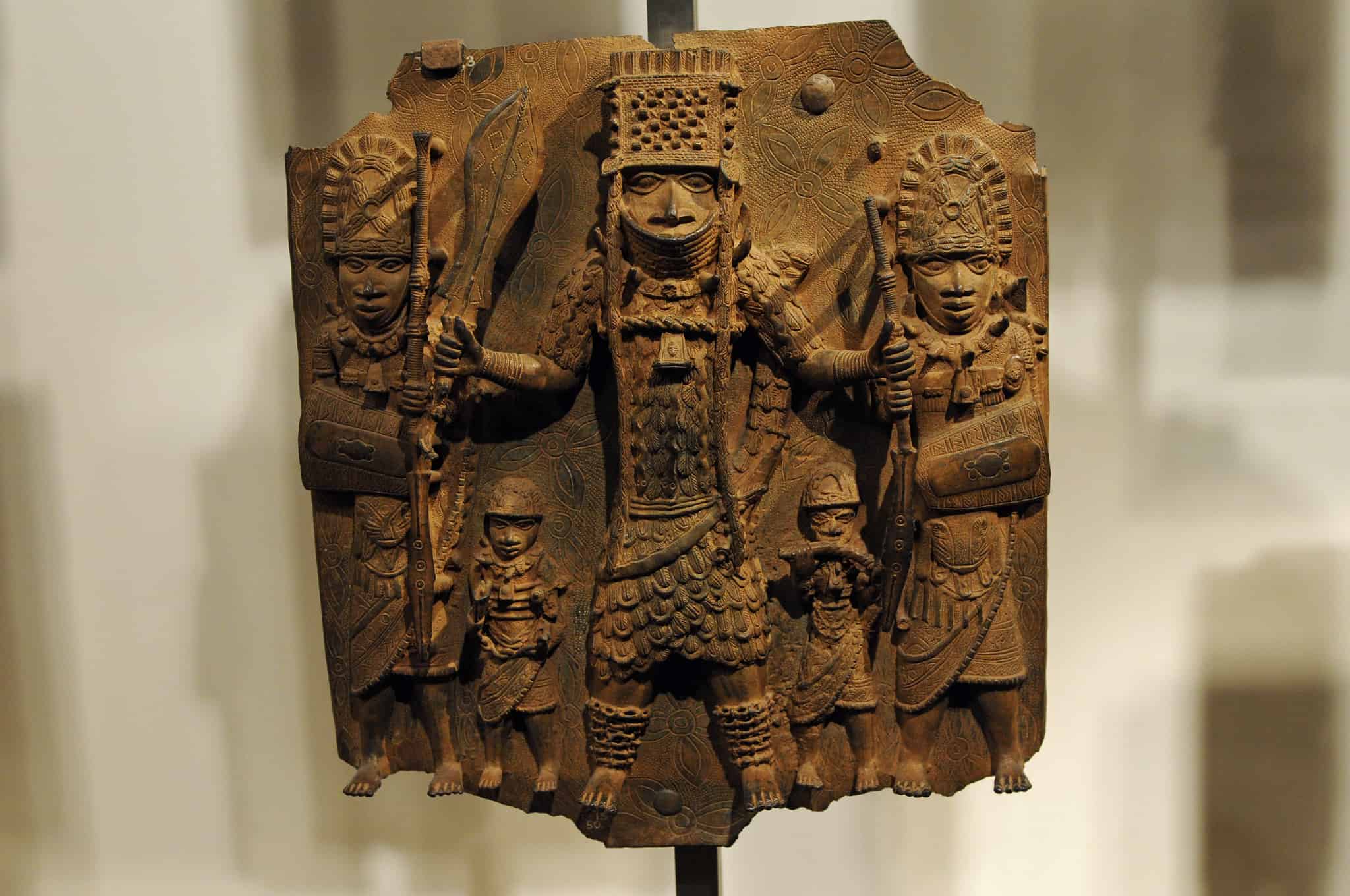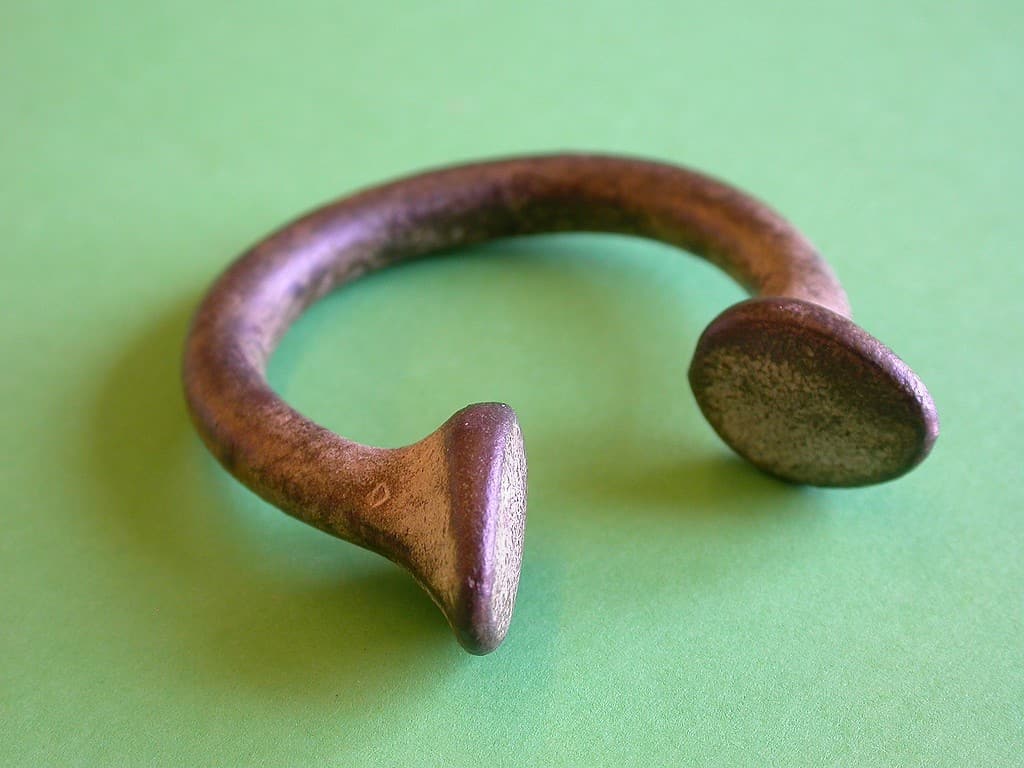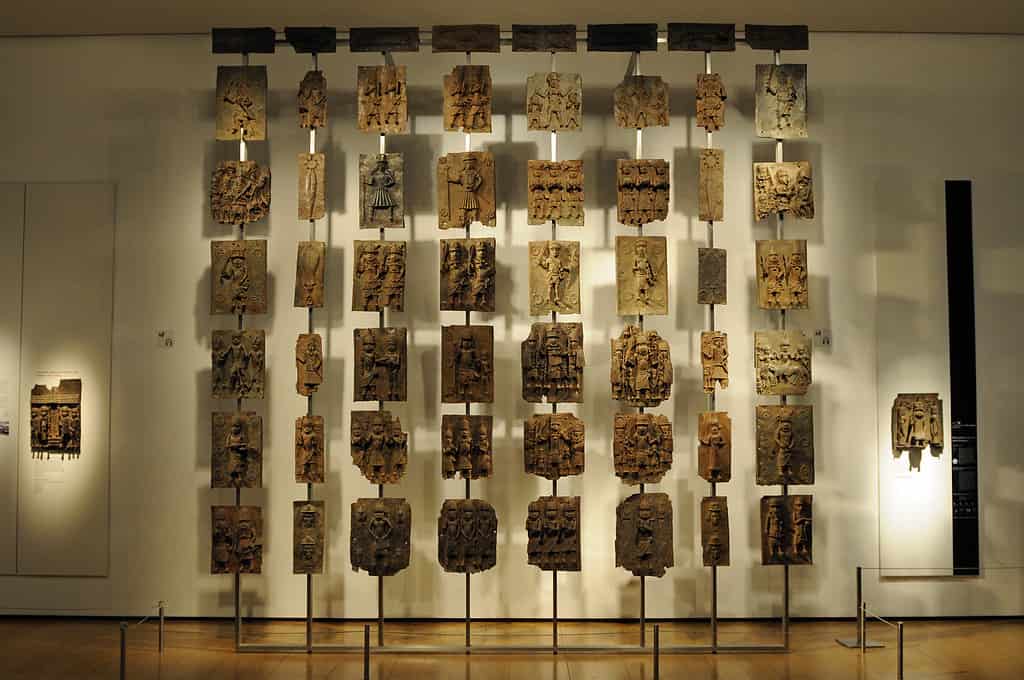
The Benin Bronzes are among the most renowned artworks in West Africa. Interestingly, recent findings suggest they were crafted using ore mined in Germany. A new study revealed that the art was crafted from raw metal derived from “manillas”—metal bracelets or anklets traditionally used as currency in some parts of Africa.
Going back in history, manillas played a significant role in trade within West Africa and Europeans picked up on this. They started manufacturing this form of currency — which they could produce in unlimited numbers — and using it for trade. Particularly for the slave trade.
In a deeply ironic twist, it appears that some of Africa’s most treasured artwork was crafted from metal once used in the slave trade.
Dark arts

The Edo People from the Kingdom of Benin, now a part of Nigeria, believed that an invisible world of gods is intertwined with the human world. They celebrated the gods but they also celebrated their rulers and historical events. In fact, unlike many other cultures, their most celebrated art celebrates their Obas (kings) and Queen Mothers.
The Benin Bronzes are a collection of more than a thousand metal plaques and sculptures that once adorned the royal palace of the Kingdom of Benin. The plaques depict scenes or themes in the history of the Kingdom and represent the “golden age” of Edo craftsmanship, in the 15th and 16th centuries.
Despite their name, these artifacts are not just made of bronze. Most were made from brass, while others were made from bronze, coral, wood, and ivory through a sophisticated and intricate process called lost-wax casting. However, many of these artifacts were seized by the British during the Benin Expedition of 1897. In fact, the artifacts are now part of a complicated repatriation project — but that’s a different story.
Our story focuses on materials. Researchers have suspected that the raw metal used to craft the Benin Bronzes came from manillas, but they couldn’t prove it.
“Metallurgists who analyzed manillas said they couldn’t be the source because the materials were too impure,” says Tobias Skowronek, a geochemist at the Technical University of Georg Agricola, for Archaeology Magazine.
Skowronek believes that previous researchers may have overlooked a crucial detail: examining the correct manillas.
Manilla isotopes from Germany
When researchers previously looked at manillas, they looked at museum specimens. However, the museum specimens are not representatives of the ones used in practice.
“Their analysis focused only on materials from museums,” he says. “Most manillas in museums date to the twentieth or sometimes the nineteenth century, and don’t have anything to do with the material that was shipped during the period of the transatlantic slave trade.”

Skowronek examined 67 manillas collected from five shipwrecks — exactly the ones that would have been used for real trade. The ships were of English, Portuguese, and Dutch origin, and included a slaver ship.
He looked at the ratio of lead isotopes in the manillas. Isotopic ratio refers to the ratio of the atomic abundances of two isotopes of the same element and this ratio can be used to pinpoint the origin of metals. His findings indicate that many of the Benin Bronzes were crafted using a specific type of manilla traded by the Portuguese.
But it gets even better. When applied to metals, such as those used in manillas, isotope analysis can help pinpoint the geographical source of the metal. With this isotope ratio, Skowronek found that the lead-zinc more was mined in Germany’s Rhineland. Since the smelting process usually took place close to the mine, the manillas were probably also made in the Rhineland area. The Rhineland region in Germany was known for its rich ore deposits and was a major hub for metallurgy and craftwork.

It’s crazy to think, but researchers actually traced the source and journey of metal that went into this unusual currency and then ended up as part of striking artwork.
The legacy of the Benin Bronzes, emblematic masterpieces of African art, will no doubt be complicated by the revelation that they were made from metal derived from European manillas used in the transatlantic slave trade. But this serves as a poignant reminder of the often-hidden ties in global pre-industrial trade.
The intercontinental journey of the metal – from German mines to European traders, then to West African markets, and finally into the hands of Edo craftsmen – is a testament to the vast and intricate networks that connected different parts of the world long before globalization became a buzzword.
The study was published in PLOS.









